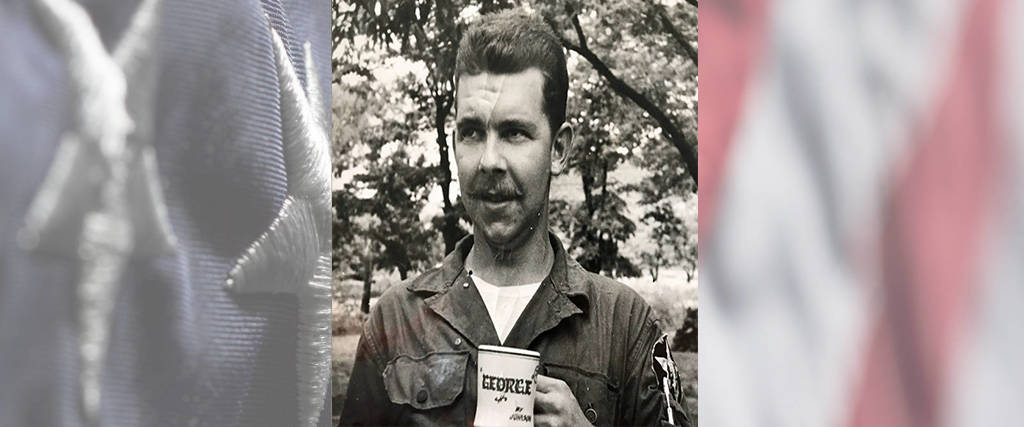U.S. Army Korean War Indian Head Park, IL Flight date: May, 2019
By Bob Pomorski, Honor Flight Chicago Veteran Interviews Volunteer
From his humble beginnings in the Cicero/Brookfield area, and then on a farm in Wisconsin, George Dirkes seemed to always know what he wanted to do. George grew up in a predominantly Irish household with his sister and two older brothers. He worked a lot in his youth having paper routes, working at a laundry and a bowling alley, then finally at the famed Brookfield Zoo. That is where he made the big money – “earning one dollar for three hours of work.”
George’s father worked for the railroad after serving in the Army during World War I. After being injured in a railroad accident in 1947, Mr. Dirkes decided to buy a farm near the Madison area in Wisconsin. George also endured tremendous sadness that same year when his middle brother, Donald, died in a motorcycle accident. Pushing through the pain and change, George was planning to attend college at the University of Wisconsin to be a Geologist when the Army came a calling. His older brother John had joined the Navy, so being in the service was in George’s blood.
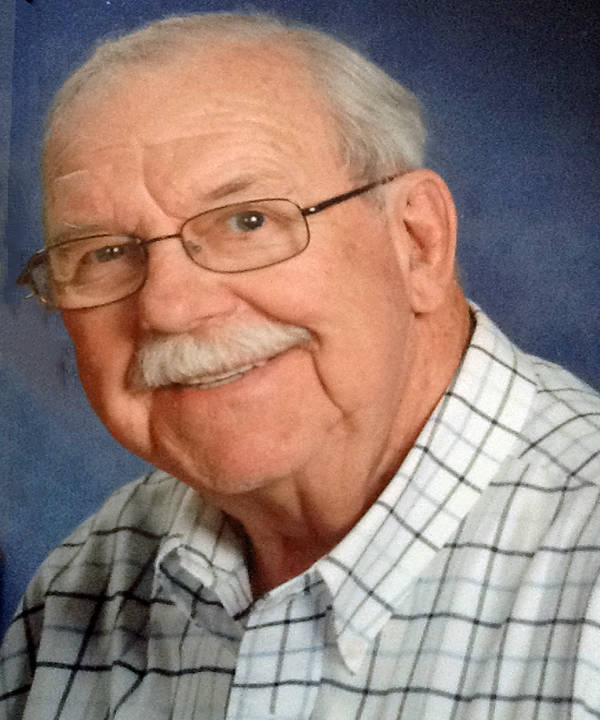
The Army sent George to Ft. Chaffee in Arkansas. (Fun fact: Ft. Chaffee was also the home of Elvis Presley for four days in 1958 upon being drafted into the Army.) While at Ft. Chaffee, George excelled at many things including artillery training. He was adept in arithmetic and easily figured out the math to understand the effective range of the shells. After senior officers noticed George’s elevated I.Q., he was next sent to Ft. Riley in Kansas for ten weeks of training. While at Ft. Riley, George was part of a military intelligence training that was attended by soldiers from each branch of the service. They learned how to interrogate spies, prisoners, and wounded soldiers. George had an affinity for geology and topography which directed him towards specialized “photo interpreting” training. With his special security clearance in hand, George was next shipped off to Korea.
After long boat rides to Japan and then to South Korea, George boarded a tiny “antique-like” train to Seoul. He remembered how funny and unreal it was to see all these big U.S. servicemen sitting in this tiny train. George always had a great sense of humor and he carried it throughout his time in Korea. He was also a fan of the famed editorial cartoonist, Bill Mauldin, who depicted the American soldier’s difficulties and dangers of duty in the field.
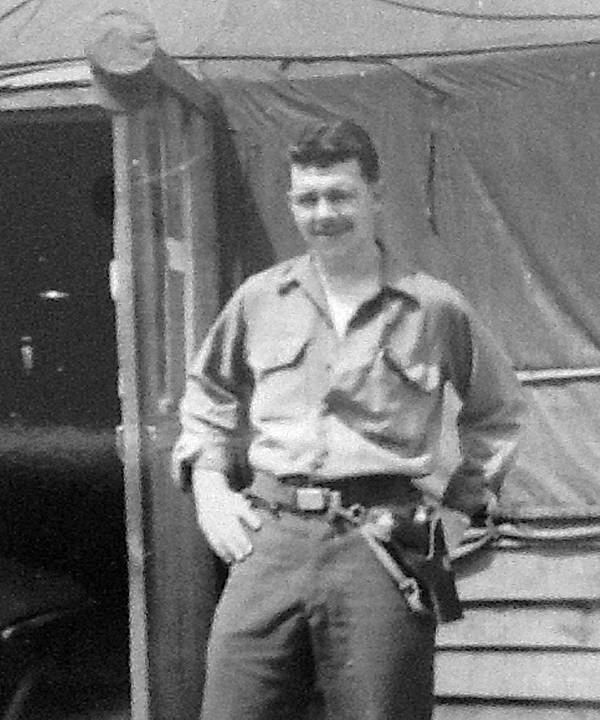
Next up, the call came and George was sent to the front, beyond the 38th parallel, with the Army’s 2nd Division. George was charged with getting reconnaissance photos to understand the enemy’s positions and strength. Prior reconnaissance aerial photos had not gotten into the deep terrain and undulations of the region. George, in tandem with the Air Force, started taking photos in a small “Stinson” plane using a K-22 camera. The K-22 was a standard reconnaissance camera designed for ground and target spotting using both vertical and oblique photography. On many of the flights, the plane would maybe be 50 feet above the ground and George would be hanging out of the plane taking photos. As George calmly stated, the plane was only “hit about four times!” His attitude of getting the picture at all costs and taking chances to do great things lead George to comment “sometimes you have to make your own thunder.”
After capturing and developing the photos, George would then need to interpret them and provide intelligence briefings to the top brass in the area. Flying low and using the K-22 camera provided more detailed information as to exactly where the enemy was entrenched. The success of these missions led to George building a team of 12 hand-picked men, operating on three shifts, flying over and capturing photos of positions near “Old Baldy” and “Bloody Ridge.” It was dangerous work that George and the squad performed over six months, but their success ultimately saved many soldiers’ lives. George earned the nickname, “the Duke,” and even though he was a Corporal at the time, was given command over the Air Force officers flying the planes. The ranking General in the area told the pilots, “this is Duke, he is the captain of the mission, follow his orders.”
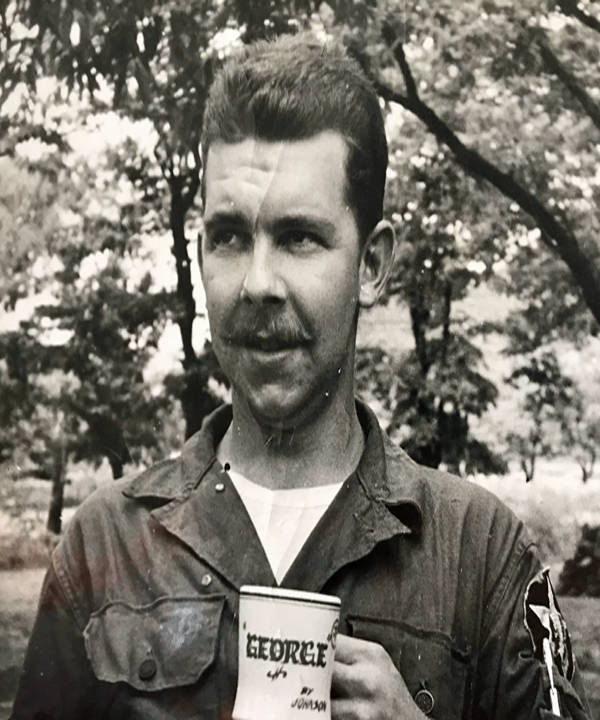
In April of 1953, George earned enough points to go back home. He was sent to Camp Carson in Colorado, which was noted for having survival training exercises due to its mountainous terrain. A few months later, George was honorably discharged with the rank of Sergeant, First Class. For his efforts in Korea, he was awarded the Korean Service Medal with three Bronze Campaign Stars and the United Nations Service Medal Commendation Ribbon.
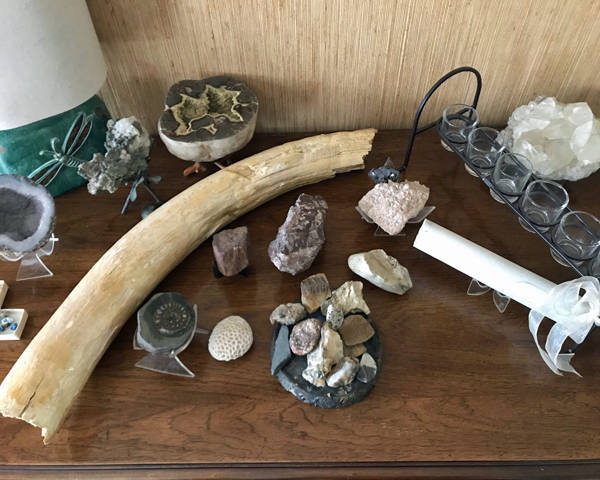
After the Army, George finally made it back to college at the University of Wisconsin and remained active in the Army reserves. He used his love of the land to earn a degree in geology. Being a proud Geologist led him to several jobs over the years and ultimately to every state in the U.S. and over 55 countries around the world.
Today, George lives in Indian Head Park, Illinois, with his lovely and engaging wife, Patricia. They have two daughters, Kathleen and Jenny, whom they love and adore. George also talks proudly of his grandson and granddaughter and “even his sons-in-law.” He maintains his great sense of humor which has carried him through many harrowing times in his life.



